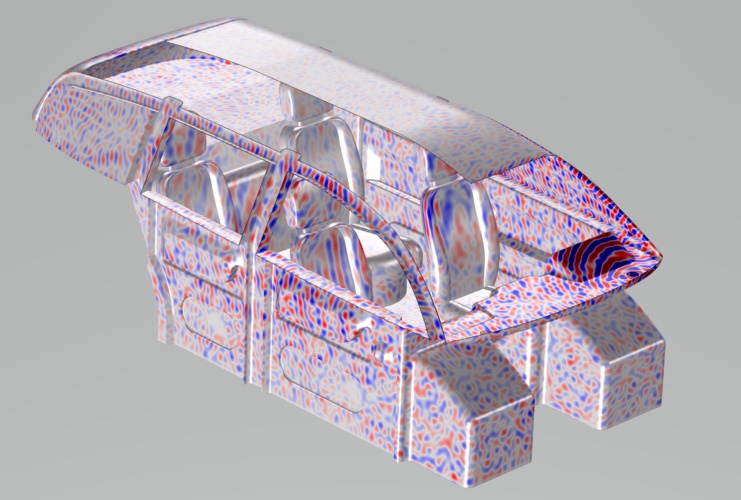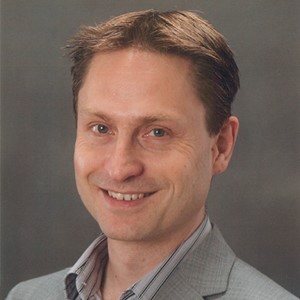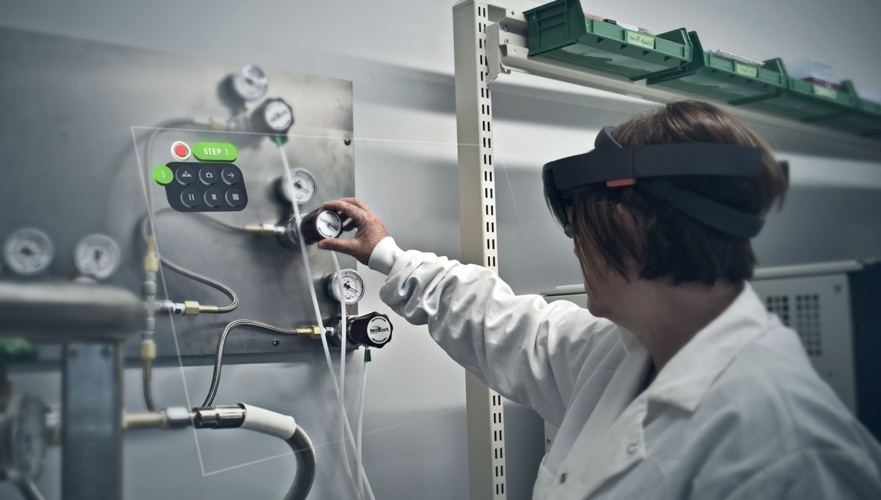Meet the panel
Bjorn Sjodin, VP of Product Management at COMSOL
Paul Haimes, VP Europe Technical Sales at PTC
Andy Harris, Senior Principal Research Engineer, Autodesk Research
What trends or customer requirements are driving developments in your product area?
BS: One of the biggest trends driving the development of modelling and simulation software right now is the need for democratisation. Modelling and simulation of physics-based problems is an extremely powerful predictive tool in product and process development. The technology is so valuable to organisations that many consider it urgent to make these tools available to a wider audience than just simulation experts. COMSOL provides leading technology in this area for app building, app compilation and enterprise deployment of apps to serve this need.

PH: 2019 saw forward-thinking companies making it a breakout year for Augmented Reality (AR). Now, as COVID-19 forces companies to look at new ways of providing assistance to workers and customers in other regions, more and more companies are seeing the true value of AR. Companies are now seeing the gains in worker efficiency and quality, whilst reducing the cost of training by more effectively transferring knowledge to new workers via AR. The issues presented by Covid-19 go way beyond the everyday business concerns of productivity or cost - this is about the health and safety of workers and thus demands a far more urgent and targeted response, and AR can provide this.
AH: Globally, companies are using generative design to solve engineering challenges and produce new design solutions that meet their needs, in less time and with less negative impact on the environment. One such area is the automotive industry. The move to reduce the carbon footprint of the sector has driven greater innovation in the design and manufacture of vehicles. Advanced light-weighting approaches via generative design will be pivotal to improving power consumption and the range of vehicles. While different materials and compositions will improve the structure of vehicles.
Can you provide one or two examples of how your products are helping customers meet their challenges?

BS: Using simulation apps, people who are not simulation experts can run their own tests without needing to comprehend the complexities of the underlying simulation. This means an entire organisation can benefit from simulation, which leads to an increased understanding of how products will behave in the real world. Also, apps with highly specialised user interfaces can help exceed customer expectations. In addition to providing customers with results in terms of standardised documents, apps allow customers to view the results and even manipulate the inputs by themselves. Simulation apps bring real-time answers directly to sales meetings, pitch talks and discussions on the factory floor.
PH: PTC is a partner in the VentilatorChallengeUK consortium, led by High Value Manufacturing Catapult CEO Dick Elsy and leading UK engineering businesses. The consortium has used PTC’s Vuforia Expert Capture AR technology and Microsoft’s HoloLens to capture the crucial assembly steps and processes involved in building Rapidly Manufactured Ventilator Systems (RMVS). This will be uploaded and edited in PTC’s cloud based Vuforia Editor technology, to create a virtual assembly guide and relayed, through wearable equipment or smart devices such as phone or tablet, to the factories of consortium partners that traditionally do not make ventilators. Protecting workers at Smiths Group, Penlon and all of the consortium partners was essential and at the heart of the project.

AH: Autodesk Research recently collaborated with Briggs Automotive Company (BAC) to apply generative design methods to its design and manufacturing process for its new generation BAC Mono. The team focused on how generative design could be applied to the wheel. We learned about the aesthetic requirements to build this understanding into the generative design setup. This new wheel design was a natural evolution of the original rather than a radical break in tradition. The results produced a wheel that was an impressive 35 per cent lighter, weighing 2.2kg per wheel, that could be manufactured traditionally on a CNC mill. This was achieved in less time than BAC had ever designed a wheel before.
What’s the key product for you currently and how is it being applied?
BS: The key product for COMSOL is COMSOL Compiler. This product converts simulation applications into standalone, executable applications in just one click. These applications can then be distributed to anyone, anywhere. The people you distribute the apps to can run them without needing to hold a license for COMSOL Multiphysics or COMSOL Server.

PH: Augmented reality, in the form of Vuforia Expert Capture, as mentioned above, and also Vuforia Chalk. PTC’s remote assistance product, Vuforia Chalk, leverages augmented reality to enable offsite and on-site employees to collaborate in the operation, maintenance, and repair of all kinds of products. It’s like Facetime, with augmented reality superpowers for industrial settings, and it’s as easy to set up and use. To help during this crisis, we’re making Chalk available for free. No obligations.
AH: Powered by Autodesk Fusion 360, generative design uses a combination of artificial intelligence and cloud-computing to create design possibilities which take into account performance criteria and real-world manufacturability requirements, allowing designers to explore thousands of designs in less time than they could deliver a single concept using traditional processes.
Looking forward, what products or technologies do you see changing your sector?
BS: Cloud computing and additive manufacturing are changing the CAD and CAE landscape. Cloud computing makes powerful computing resources easily available, whether it is within the domains of an organisation as a private cloud or publicly available. More computing power means more realistic simulations with more accurately represented multiphysics models. Vendors are adapting their software to accommodate more computing power at the hands of users. Additive manufacturing changes the way users think about the CAD models that are used as the basis for modelling and simulation. More flexible and complex geometry analysis is needed with hybrid solutions mixing traditional CAD with mesh-based modelling. In addition, additive manufacturing frequently requires multiphysics analysis in order to accurately make predictions for the wide variety of manufacturing processes.
PH: I feel the combination of IOT platforms and AR technologies will eventually impact all parts of our personal and professional lives. Think of this combination as converting bits and bytes into sound and sights which can be easily consumed by the human. IOT platforms offer the potential to bring together disparate data sources and contextualise it in a form which can then can be delivered easily as an AR experience. Combine this with complimentary capabilities such as Geo Fencing driven AR technology and I can see this evolving at an unprecedented rate – once devices can enable it.

AH: In addition to improving and offering more generative design capabilities within Fusion 360, such as the added layer of unique aesthetics for the designer using it, we are extending this offering to the architecture, engineering and construction (AEC) industry. We recently announced Generative Design as a feature in Autodesk Revit, allowing users to explore, optimise and evaluate data-driven design alternatives based on project goals, constraints and inputs. With the introduction of Generative Design in Revit, industry professionals can utilise this algorithmic problem-solving technology to explore design alternatives, identify improved outcomes and make data-informed decisions faster than ever before.




Red Bull makes hydrogen fuel cell play with AVL
Formula 1 is an anachronistic anomaly where its only cutting edge is in engine development. The rules prohibit any real innovation and there would be...